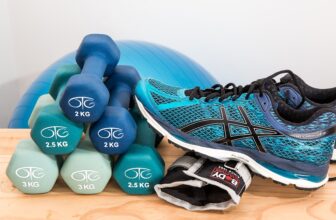Staying physically active and fit is an important aspect of maintaining good health throughout our entire lives. From childhood to old age, exercise and physical activity can help us stay healthy, prevent chronic diseases, and improve our overall wellbeing. In this article, we will explore the different ways to stay active and fit through every stage of life.
Childhood and Adolescence
Children and adolescents require physical activity to build strong bones and muscles, maintain a healthy weight, and improve mental health. The recommended amount of exercise for children and adolescents is at least 1 hour of moderate-intensity physical activity per day. This can include activities such as running, jumping, cycling, or playing sports.
It is important to encourage children to engage in physical activity that they find enjoyable so that they can develop a lifelong habit of exercise. Parents can also set a good example by being active themselves and participating in family activities that involve physical activity.
Young Adulthood
Young adults may find it harder to stay physically active due to work commitments, social engagements, and other responsibilities. However, it is essential to maintain a healthy level of physical activity to prevent chronic diseases, maintain a healthy weight, and improve mental health.
The recommended amount of exercise for young adults is similar to that of children and adolescents – at least 1 hour of moderate-intensity physical activity per day. This can include activities such as running, cycling, swimming, or joining a fitness class.
It is also essential to incorporate strength training exercises into your routine to build lean muscle mass and improve bone density. This can include weight lifting, push-ups, squats, or other exercises that target major muscle groups.
Adulthood
As we age, our bodies go through changes that can affect our physical activity levels. It may become harder to maintain muscle mass and bone density, and some may experience joint pain or other health conditions that limit their ability to exercise.
However, it is important to continue to stay physically active as we age to maintain good health and prevent chronic diseases. The recommended amount of exercise for adults is at least 150 minutes of moderate-intensity physical activity per week, in addition to strength training exercises at least two days per week.
Exercises that are easier on the joints, such as swimming, cycling, or yoga, can be beneficial for older adults. It is also important to listen to your body and not overdo it, as injuries can take longer to heal as we age.
Older Adults
As we reach old age, it becomes even more important to stay physically active to maintain our independence and prevent chronic diseases. The recommended amount of exercise for older adults is at least 150 minutes of moderate-intensity physical activity per week or 75 minutes of vigorous-intensity activity.
Exercises that improve balance and flexibility, such as yoga or tai chi, can be particularly beneficial for older adults to prevent falls and maintain mobility.
FAQs:
1. How much physical activity do I need?
The recommended amount of physical activity varies depending on age and health status. However, adults should aim for at least 150 minutes of moderate-intensity or 75 minutes of vigorous-intensity exercise per week, in addition to strength training twice per week.
2. What are the benefits of staying physically active?
Staying physically active can help maintain a healthy weight, prevent chronic diseases such as heart disease and diabetes, improve mental health, and increase energy levels.
3. Can I still exercise if I have a health condition?
It is important to consult with your healthcare provider before starting any new exercise program, particularly if you have a health condition. However, physical activity can often be beneficial for managing certain health conditions, such as diabetes or arthritis.
4. What are some examples of strength training exercises?
Strength training exercises can include weight lifting, push-ups, squats, lunges, or other exercises that target major muscle groups.
Pros:
– Staying physically active can help maintain good health and prevent chronic diseases.
– Exercise can improve mental health and increase energy levels.
– Incorporating strength training exercises can help build lean muscle mass and improve bone density.
Cons:
– Injury can be a risk with physical activity, particularly if pushing yourself too hard or ignoring your body's signals to rest.
– Physical activity may not be appropriate for all individuals, particularly those with certain health conditions.
Conclusion:
Physical activity and exercise are essential for maintaining good health throughout our entire lives. Whether you are a child, young adult, older adult, or somewhere in between, there are always ways to stay active and fit. By incorporating a variety of activities into your routine and listening to your body, you can maintain good health and prevent chronic diseases for years to come.










